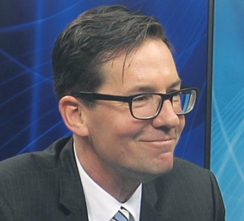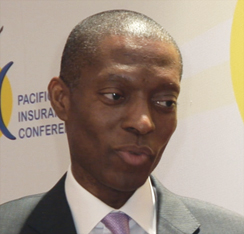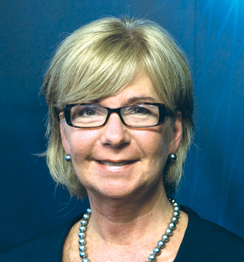Conference Coverage
Rendez-Vous Recap
Reinsurers’ largest conference reveals the industry’s emerging risks, industry outlook and new opportunities.
- Yvette Essen
- November 2018
-





Emerging Risks
An industry expert explains why plastics may be the next product sending the industry into litigation.
Robert Reville, chief executive officer, Praedicat, said scientists have discovered in the past year that additives to plastics used in building products and toys can result in obesity when children are exposed to them.

Robert Reville
What are the big risks that we are likely or may well be hearing about in the future?
The risks that we focus on are what scientists are newly researching, that are commercial activities that might result in litigation. A lot of it, on an ongoing basis, has to do with the way in which plastics affect us, and the way they affect our health, and the way in which they cause diseases. Things like obesity, and autism, and ADHD and Type 2 diabetes—all are related to plastics.
In the last year they found some additives to polyvinyl chloride that's used in a lot of building products that may be what they call obesogens. Specifically, they're things that cause us, when we're exposed to them as children, to be more likely to get fat when we're older.
They've also found some other chemicals used in plastics that are used to make things like toys that are called dibenzoates, that are likely to be a obesogen as well. Then some other things that we've been looking at are acetaminophen, the pain reliever.
There's new research that says that exposure to acetaminophen during pregnancy or early childhood may be associated with autism as well. Then there is some new work that is looking at antibacterial soap, and the antibacterial soap area is one where we are able to quantify the risk. It's a little bit more advanced, and it's a different definition of emerging risks for us.
We found that in the last year, the science has matured to the point that we think there's a 1% or more chance of a billion or more in litigation.
Industry Outlook
A panel of A.M. Best analysts said reinsurers still face profitability pressures, but the increasing demand for insurance is providing growth opportunities.
Stefan Holzberger, senior managing director and chief rating officer; Robert DeRose, senior director; and Anthony Diodato, managing director discussed A.M. Best's market segment outlook on the reinsurance market.
“Reinsurers are very well-capitalized and have the capacity to absorb adversity, over the near term,” said DeRose. “What really is dictating A.M. Best's negative outlook is the operating and total performance of the sector, which really has been under pressure for a number of years. In order to attain and retain investors, you have to provide a reasonable return. You need to have strong financial flexibility, which comes from the investors. A.M. Best's concern has been and continues to be on profitability and improving that profitability.”
Holzberger highlighted some positive aspects of the market.
“A slow rise in interest rates will be a positive on investment income, helping that bottom line,” said Holzberger. “Economic growth in some of the mature Western markets also has driven an increase in the underlying demand for insurance, and the reinsurance sector is benefiting from that as well. In addition, the significant catastrophe events from last year have led to an increased demand for reinsurance.”
Underscoring the importance of innovation, Diodato said, “Innovation is not just 'the new product,' but how a company becomes more efficient in the way it acquires business and the way it processes business, because that's going to be a deciding factor for many companies. … It is such a key component to an organization distinguishing itself in the future, whether it is a reinsurance or commercial one.”

Moses Ojeisekhoba
Seizing Opportunities
New exposures and non-insured entities herald favorable business conditions for reinsurers.
Moses Ojeisekhoba, chief executive officer of reinsurance, Swiss Re, said long-term opportunities are emerging as strengthening economies, aging societies and urbanization increase exposure.
Can you highlight the industry's opportunities?
Aging societies is an example. Urbanization—people moving to urban areas and the density of urban areas. Also, no surprise, people are moving to areas where there's a greater propensity for natural catastrophes as well. This continues to create significant exposure and from my own perspective, I think there will be opportunities for reinsurers to find solutions to address these exposures that are growing. You look at the events from 2017 and the majority of the losses that occurred driven by nat-cat were still not insured. I think the industry has, in the short term, an opportunity to try and close some of these gaps. We also know from a reinsurance standpoint that for a number of the primary companies, income volatility, as well as trying to make sure that they manage their capital well, is on their mind, which creates all sorts of opportunities for us as a reinsurer from being able to address these needs through transactions.

Karen Clark
Model Behavior
The insurance industry requires more information and transparency from catastrophe models.
Models will become more customized and accurate in the near future. said Karen Clark, president and chief executive officer, Karen Clark &Co.
Are insurers too reliant on the models out there?
Over the past 30 years, the models have become very important to the industry. They're used for many purposes such as pricing and risk transfer.
What's evolved is that insurers and reinsurers actually need more from the models. They need more types of information, not just the exceedance probability curves but more underwriting information so that insurers can properly track where they can write more, where they can write less.
How do you expect models to evolve further?
Insurers and reinsurers are looking for more accurate models. Over the last 30 years, a lot of the focus has been on the science underlying the models. The purpose of the science is to generate accurate loss estimates. Now, the attention is focused on how can we make the models more accurate? The other need of the industry is more transparency. What we're going to see over the next 30 years is the models being more open to the users. Maybe even more importantly, they're able to customize those assumptions more efficiently to their views of risk and their big data.
Yvette Essen is director & manager, research, communications & media, A.M. Best—EMEA. She can be reached at yvette.essen@ambest.com